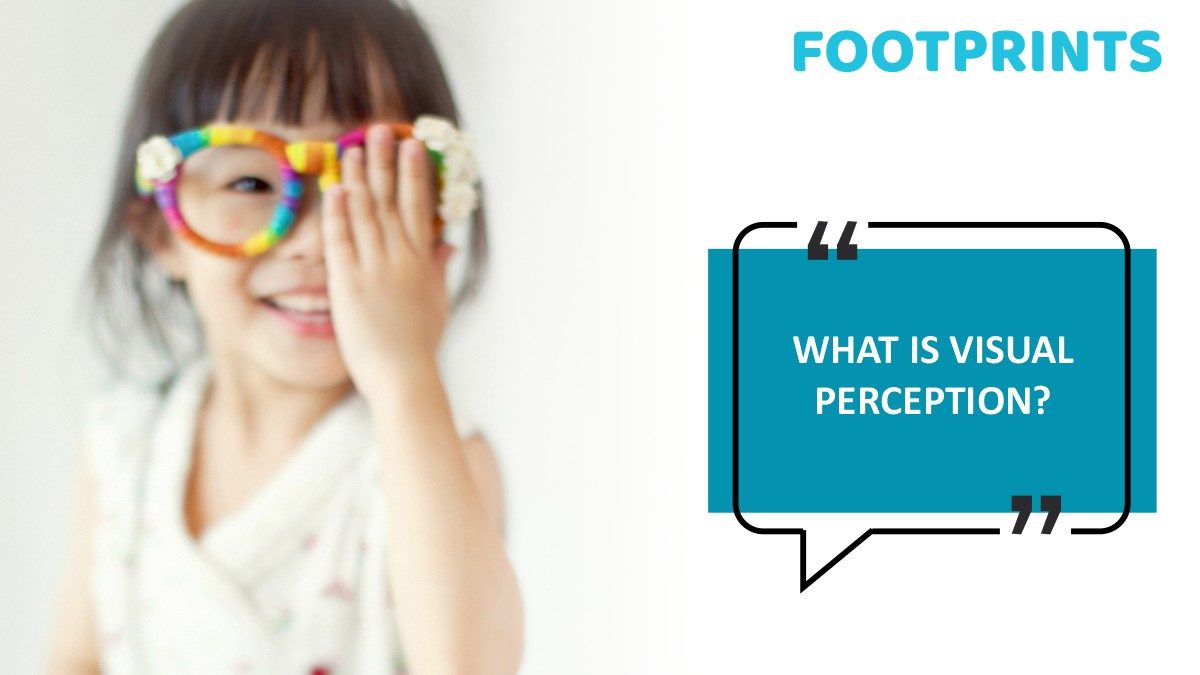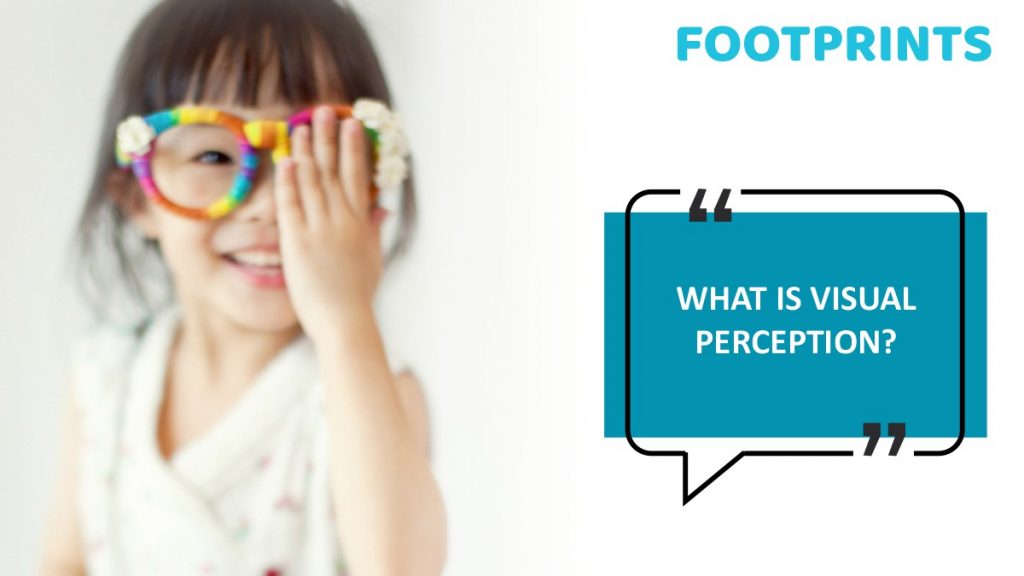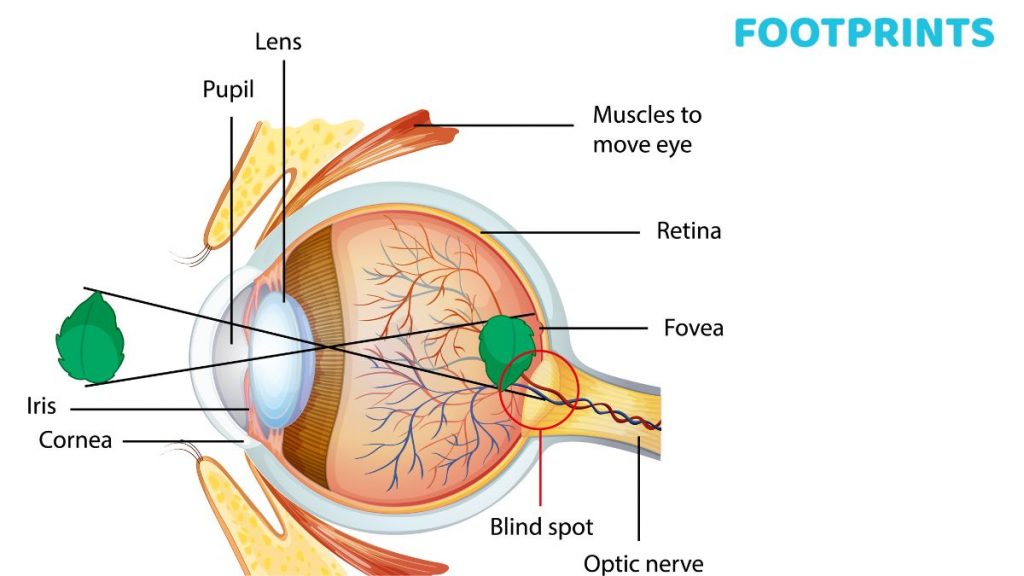

Did you hear of a child having issues with visual perception and want to know what it entails? Importantly, are you keen on knowing about what can be done to improve visual perception? Read on as we apprise you of this important aspect.
Simply put, while our eyes “see,” the brain needs to understand what they see. Visual perception is the ability to comprehend and make sense of visual information in the environment via the process of sight. This intricate process consists of multiple steps, starting with the eyes detecting light and finishing with the brain interpreting visual stimuli. Individuals can understand and interact with their surroundings by identifying, organizing, and interpreting shapes, colors, spatial relationships, movement, and other visual characteristics.
Let us try to understand it through an example:
You are walking down a busy street when you notice a billboard. You see the various colours and shapes on the billboard. The brain then combines all this information for you to realize that the advert on the billboard is to do with your favorite pizza brand.
An important disclaimer here- visual perception isn’t the same thing as visual acuity. So, a child may have an absolutely clear vision and yet may face issues with visual perception.
How does Visual Perception work?
The first bit of visual perception is vision, which takes place through the cornea, the lens, and the retina. Light enters the cornea, and the lens directs the light rays to the retina. The retina turns light into electric signals. The neural impulses are received by the optic nerve which in turn transmits it to the brain. The visual cortex of the brain then processes and interprets visual information.
Vision perception disorders involve difficulties with the interpretation and processing of visual information as they alter how the brain makes sense of information received through the eyes.

Theories related to Visual Perception
There are two main theories regarding visual perception.
- Top-Down Processing
- Bottom-Up Processing
Top-Down Processing
As per this theory, perception is based on former knowledge in the brain related to visual information. Essentially, then, there is a process of constant hypothesis testing that takes place in the brain that makes sense of visual data.
Bottom-Up Processing
According to this theory, any sensory information received is interpreted, and an adequate response is offered. The Perceptual Cycle speaks of Top-Down Processing and Bottom-Up Processing interacting with each other.
Importance of Visual Processing
That brings us to the important question of what is the importance of visual perception. We need visual perception skills for a wide range of activities, such as:
- Reading
- Writing
- Completing puzzles
- Drawing
- Matching socks and more
There you go- in looking at even a small list of activities that require visual perception, you would realize that in the absence of visual perception, a child’s academic performance, as well as the ability to carry out basic day-to-day life issues, will be compromised. What can take the biggest hit, therefore, is the child’s self-esteem.

What are the various aspects necessary that aid the development of visual perception?
Some of the building blocks include:
- Sensory processing- This refers to the response to sensory stimulation.
- Visual attention- Ability to focus on important visual information.
- Visual discrimination- Ability to differentiate between objects.
- Visual memory- Ability to recognize visual traits.
- Visual-spatial relationships- Understanding what the relationship is between different objects.
- Visual Sequential Memory- Ability to recall the sequence of objects.
- Visual Figure Ground- Ability to locate an object in a busy or cluttered background.
- Visual Form Constancy- Ability to recognize the form of an object even when it undergoes size changes.
- Visual Closure- Ability to piece an object together without a part of the piece.
How can you recognize if a child has issues with Visual Perception?
You can recognize issues with visual perception if the child struggles with day-to-day activities such as completing simple puzzles, struggles with spatial concepts such as under, over, in front of, and more, reversing digits or letters, copying information, completing partially drawn objects, sorting personal belongings and more.
As mentioned earlier, the ability to concentrate leads to behavioral issues and avoidance, impacts overall academic performance, and more. Needless to say, if issues with visual perception are left unattended, it leads to difficulty in completing tasks independently, a range of issues such as stress and anxiety, poor self-esteem, and more.
If the child indeed has issues with visual perception, seeking therapy is very important. With the help of therapy, the child can consistently improve their abilities when it comes to visual tasks. Additionally, therapeutic intervention will ensure that the child can complete their academic tasks as well as their self-care tasks. You will also notice improvement when it comes to an overall sense of well-being besides keeping the child’s frustration at bay.
Other than therapy, some of the activities that you can follow to help improve it include:
- Giving them visual cues to act on.
- Keep their desk clutter free and eliminate visual distractions as far as possible.
- Breaking visual activities into small steps.
- Practicing completing partially drawn pictures.
- Dot-to-dot worksheets.
- Offering a range of sensory activities.
- Identifying objects by touch.
- Playing memory games.
Finally, with the question of what kind of therapist one should choose in case the child has issues with visual perception, the answer is, an occupational therapist. Make sure that if you spot any signs of your child suffering from issues related to it, you consult a good occupational therapist. Early intervention can go a long way in helping the child with these issues.
Keep watching this space for more handy information. At the Footprints Playschool blog, we bring to you information on a whole range of issues that are of interest to a parent. As a preschool chain that has emerged as a parenting partner for parents across the country, our focus is on the holistic development of children.
Aditya brings over ten years of expertise as a Senior Marketing Strategist. He’s an expert at developing captivating marketing tactics that regularly provide excellent outcomes. His innovative strategies have demonstrated a track record of increasing organizational reach and engagement, showcasing his extensive knowledge of the contemporary marketing landscape.

